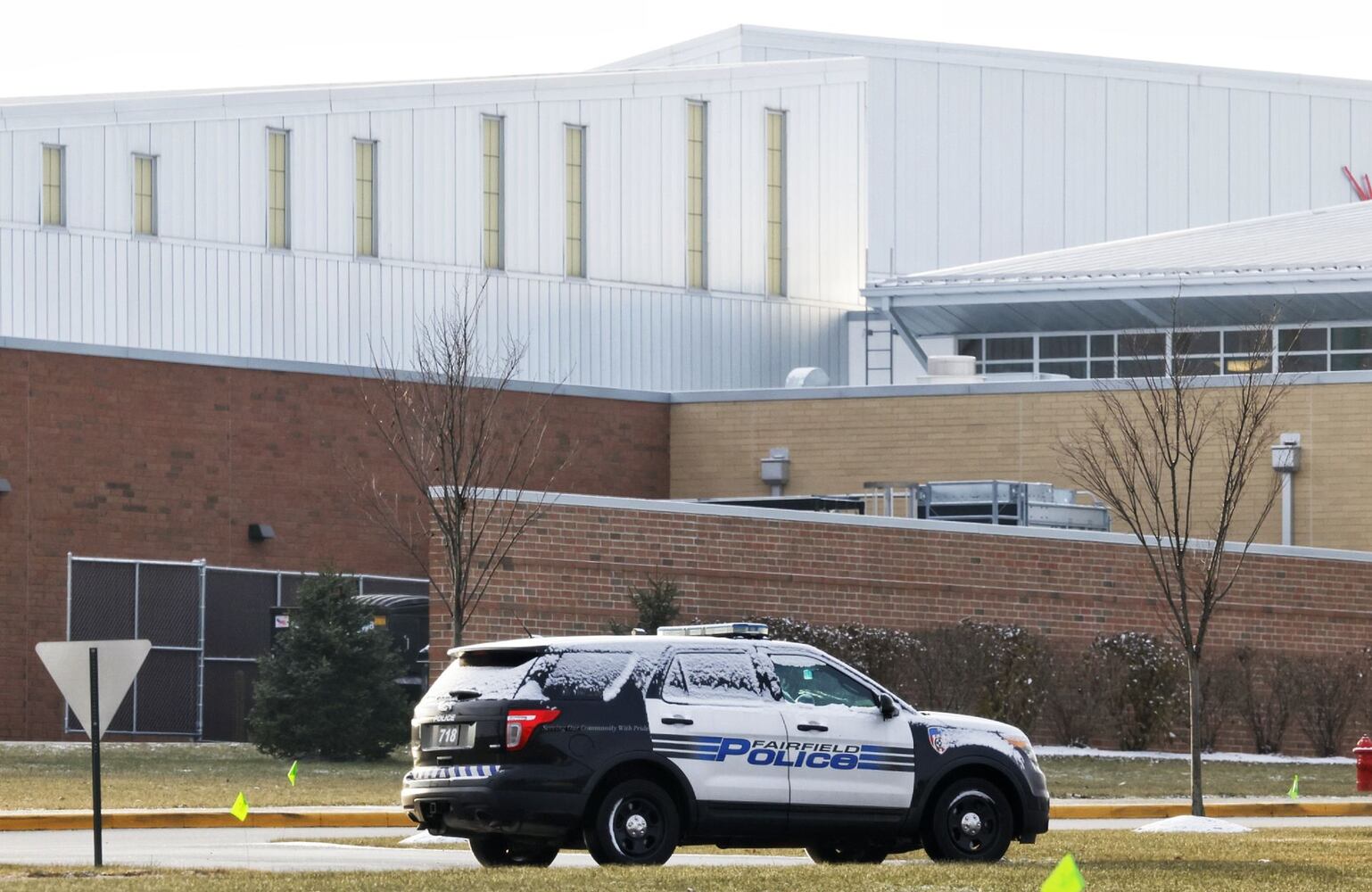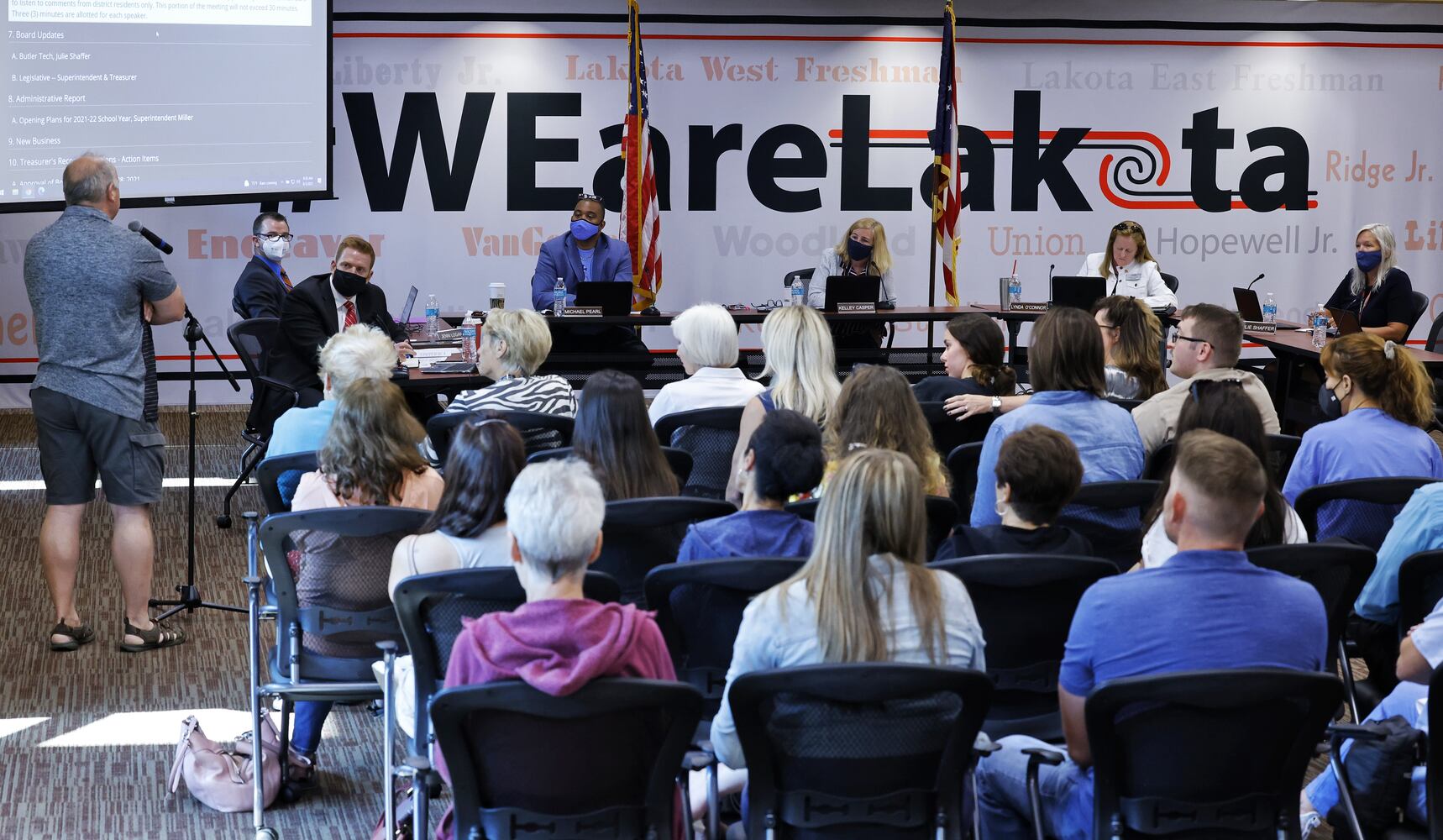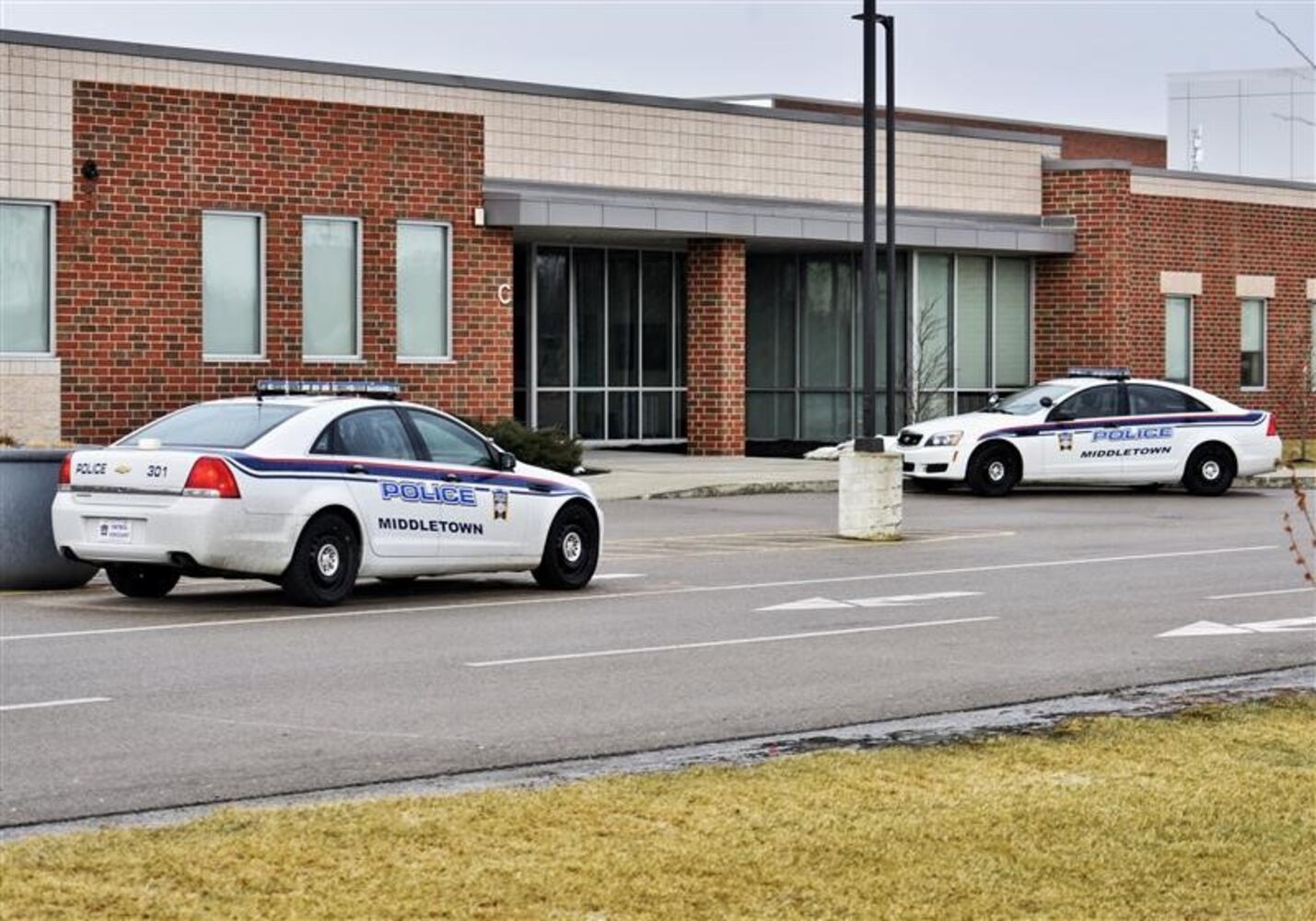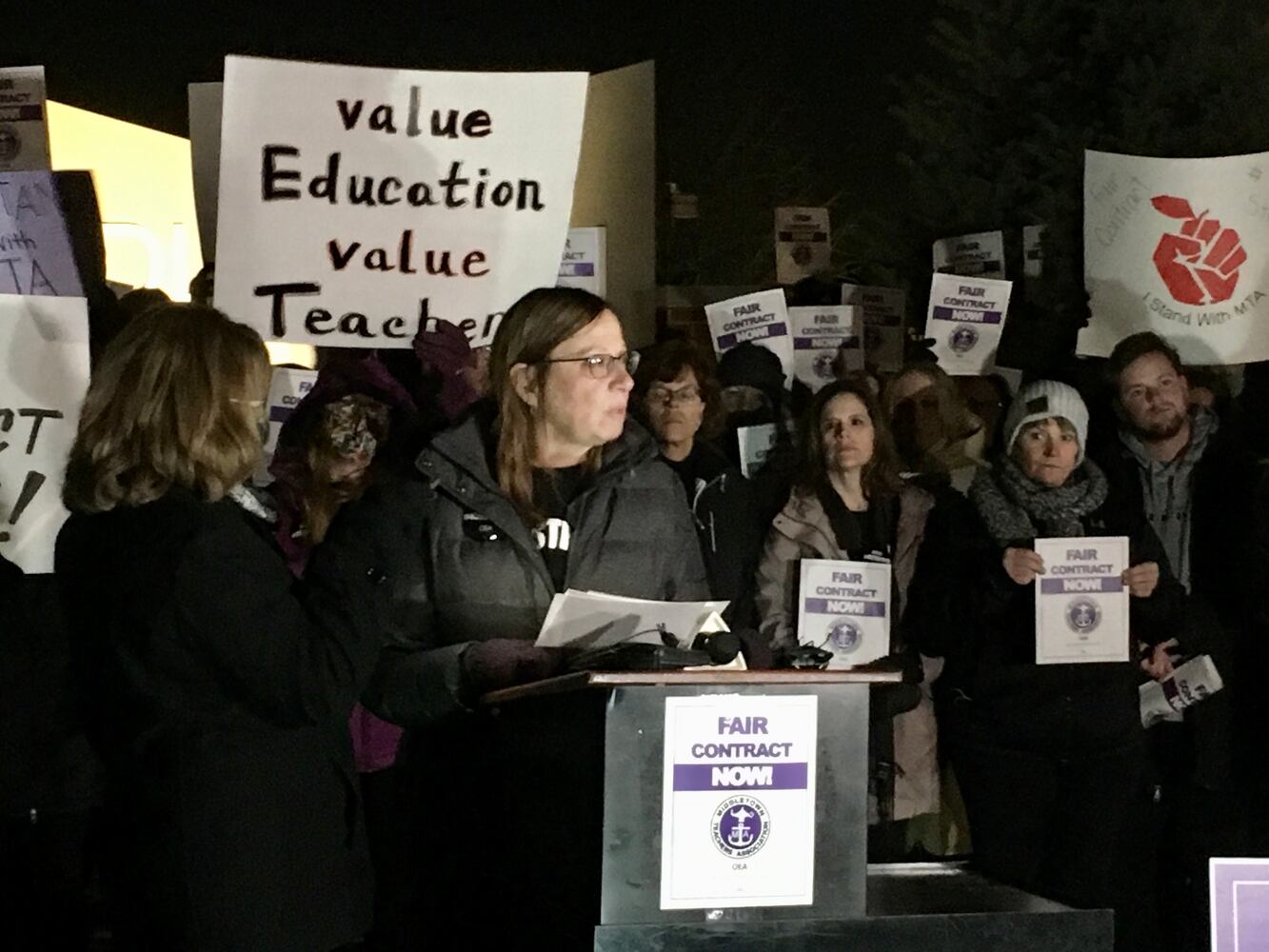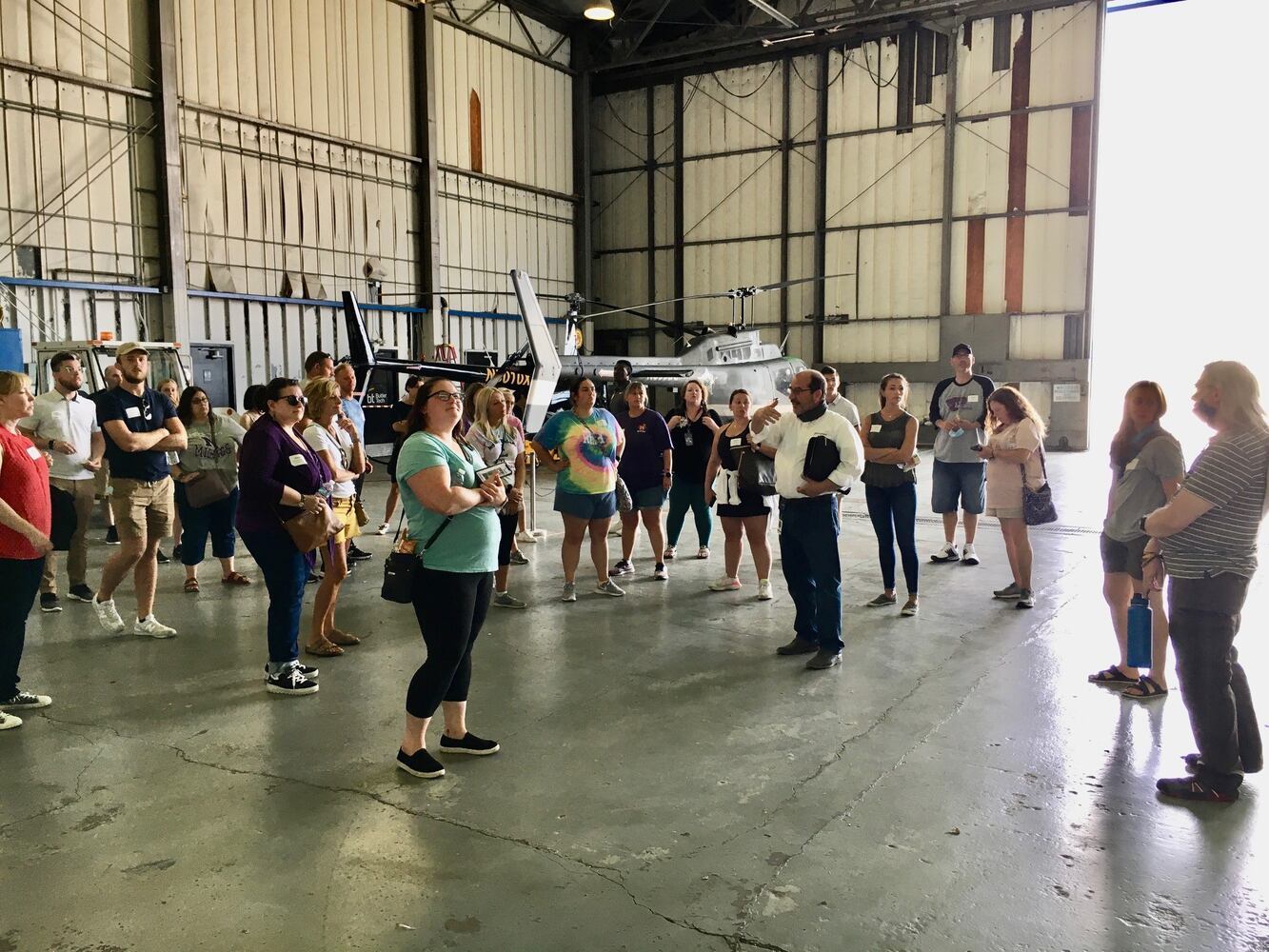Starting with Covid’s onset in March 2020, parts of 2020, all of 2021 — and soon 2022′s school operations — were and will be conducted under the shadow of coronavirus.
“The 2021-2022 school year marks the third consecutive year of school during the COVID-19 pandemic,” said Matt Miller, superintendent of the 17,000-student Lakota Schools — the largest in Butler County and the largest suburban district in southwest Ohio.
“Think about that. Students in kindergarten, first grade, and second grade have never had a ‘normal’’ school year,” Miller told the Journal-News.
“Superintendents throughout Butler County, and the country, are faced with making decisions on a daily basis that may or may not be popular with families and communities,” said Miller. “Every decision I make has the best interest of our 17,000 students in mind. During COVID, that includes how to keep our kids safely learning in school.”
The global viral outbreak dominated school news in 2021 and created offshoot news that also grabbed headlines, such as student mask protest from some school parents and historically high student and teacher absences due to the state’s first tries at quarantine guidelines.
“We’re still in a pandemic,” said Middletown Schools Superintendent Marlon Styles Jr.
“It’s a unique challenge and life has changed for another school year,” said Styles, who leads the 6,300-student Middletown Schools.
“One of the biggest celebrations of this school year (so far) is that in this second year of the pandemic our district is face mask optional in the first time in over a year,” he said.
Russ Fussnecker, superintendent of Edgewood Schools, said as a result of the pandemic, “school districts face increased costs, as well as a lack of available staffing and resources.”
“Despite some of the additional designated funding during the pandemic, it is always a challenge for us to navigate the give and take in the Ohio (school) funding process,” said Fussnecker, who is Butler County’s most veteran superintendent.
Pandemic-related threats to school boards, educators
In early October, the Journal-News was reporting on the uproar at some local school board meetings regarding the mandatory masking some districts required but later changed to optional.
Since classes resumed in August, the Journal-News reported at the time, new discord from the coronavirus pandemic is playing havoc with once-relatively staid local school board meetings as some frustrated parents blast members over student mask mandates and other issues.
Some of the governing boards are seeing unprecedented pushback on the masking of students, occasionally leading to loud disruptions, police intervention and boards ordering some attendees out of meetings.
The sometimes-contentious atmosphere, which most recently erupted locally at a Hamilton school board meeting, isn’t limited to Ohio.
The National School Boards Association sent a letter to President Joe Biden seeking federal assistance nationwide to investigate and stop threats made over pandemic-related policies including mask mandates, likening the vitriol to a form of domestic terrorism. The NSBA later withdrew their letter and some local school boards, including Hamilton’s Board of Education, renounced the NSBA’s stance.
The unprecedented contentiousness at some local board meetings also saw an Ohio candidate for the U.S. Senate clash with Lakota’s school board over some of its policies on hearing public comment.
And the Lakota board was also sued this fall by a member of the community by a resident who spoke on a number of issues during a public meeting.
Rick Lewis, CEO of the Ohio School Boards Association, said he has been involved in public education for 38 years told the Journal-News he had never seen anything like it.
“What we are seeing now is a time that we have not experienced before,” said Lewis. “Whether it’s masks, (Critical Race Theory), vaccinations, the polarization of community members is stronger than ever. And what’s probably more disappointing — and I’m fine with disagreement — is the way it is being expressed at these public meetings with vitriol, the animosity and the anger.
“There seems to be no room for civility in the conversation and putting our best efforts together and coming up with creative solutions. It appears that … one side has to win and one side has to lose and in the middle lie school boards,” said Lewis.
Madison Schools district resident to be paid in free speech case
Madison Schools, which have been entangled in a number of lawsuits since the 2016 on-campus shooting by a student, also saw a federal appeals court ruling this month ordering the district to pay a complaining resident.
Madison Schools have agreed to pay Billy Ison and his lawyers $107,500 after a federal appeals court ruled the district violated his free speech rights during the debates over its gun policy.
The settlement agreement stipulates the six-figure settlement amount and that the district will not restrict speech that is abusive, personally directed or antagonistic anymore.
Former Lakota East High School principal investigated
Lakota Schools drew wide attention in the spring when it ordered the principal at Lakota East High School — one of the largest in Ohio — on paid leave before the end of the school year.
According to a district settlement in September, Yejide Mack submitted her resignation in August in exchange for district officials agreeing to halt their investigation into circumstances that led to her being ordered on leave in May, according to Lakota officials.
The Journal-News was the first to report on Mack’s ordered leave in May, just a couple of weeks prior to Lakota East’s senior commencement ceremony.
Under Mack’s supervision, the school had switched from its traditional, gender-specific cap and gown colors of black for boys and white for girls to all black for all students.
Lakota Superintendent Matt Miller later apologized in a message sent to Lakota East parents and students for the change and said the traditional, gender-specific colors would be restored.
Schools receive federal relief funds
Some new monies came to area public schools through Ohio’s adoption of a new school funding formula — in June’s biennium budget — and new federal pandemic relief funds to help school districts nationwide cover some of the expenses caused by the on-going pandemic.
The Elementary and Secondary School Emergency Relief Grant Program, which is part of the Coronavirus Aid, Relief, and Economic Security Act, was cited by Middletown school officials for helping them avoid making millions in personnel and program cuts and push back any talk of a possible school tax hike.
The new state and federal funding also allowed schools to close the long-standing digital divide whereas lower income students lacked laptops and home internet wireless access for learning.
Middletown promotes closing digital learning gap
In May, Ohio Governor Mike DeWine came to Middletown, which has one of the highest percentages of poor families in the region, to sign a bill to help close the digital learning gap.
Middletown Schools Superintendent Marlon Styles Jr. was among the Butler County school officials joining the signing ceremony by Governor Mike DeWine and the new funding from the law has been a goal of Styles in recent years.
The bill provided $20 million statewide to fund the broadband project with plans to secure $200 million in funding that has wide support from Republicans and Democrats, DeWine said during his press conference at Amanda Elementary School in Middletown.
Styles recently told the Journal-News providing wider digital learning access was among his “equity” priorities for his district.
“I’m definitely proud of schools and our staff wrapping their arms around the children … for giving our children the opportunities they need not to just recover from the pandemic, but to continue to chase their dreams,” Styles said.
Students and faculty grieve teachers who died
In November, Butler County and surrounding communities lost five teachers suddenly, either due to illness or for unannounced reasons.
There are no apparent connections among the deaths of the five classroom instructors, who taught at Wilson Middle School in Hamilton, Fairfield High School, Springboro High School, Edgewood City Schools and a private school in Harrison. What they do all have in common is the sadness they left behind among students, school colleagues along with the profound grief of their families and close friends.
The four women and one man ranged in ages 36 to 65 and all had strong ties to Butler and Warren counties.
Miami University’s Associate Dean of the graduate school and professor of educational psychology, Amity Noltemeyer, said “the death of a teacher is tragic and can be devastating for all in the school community, including students.”
And during a pandemic, “when students face multiple stressors or challenging circumstances, it can become even more important to connect with them and build their capacity for resilience.”
About the Author
